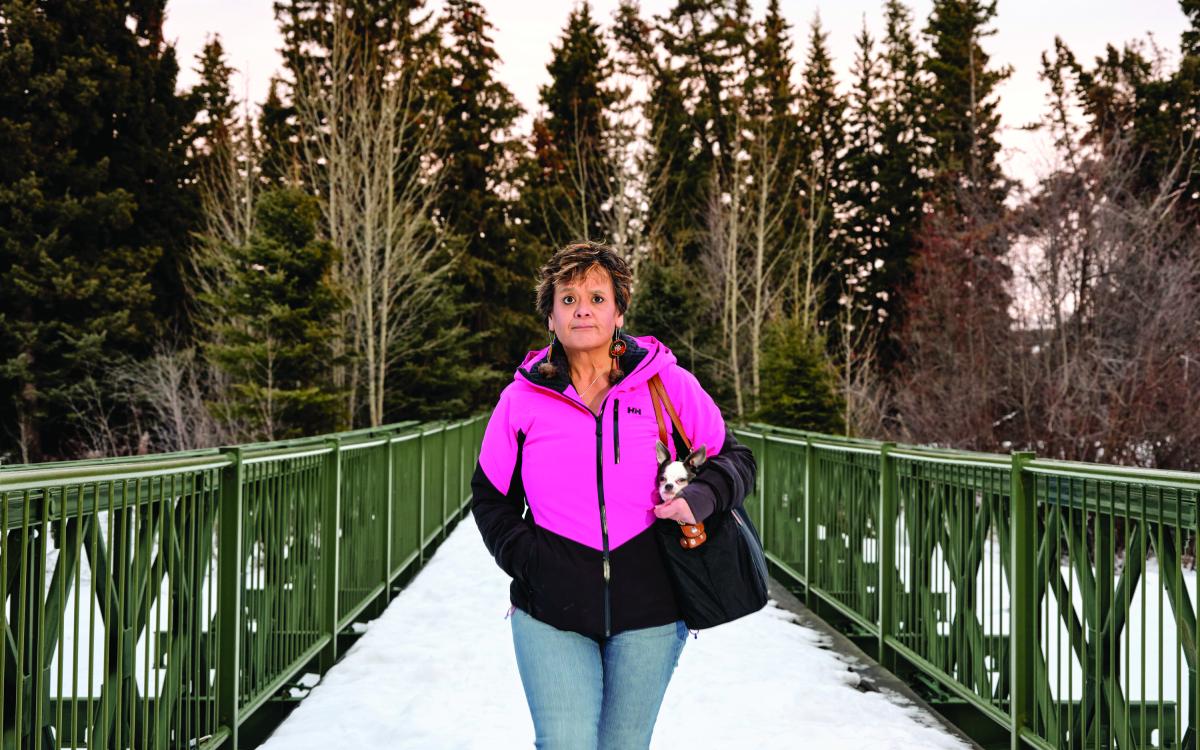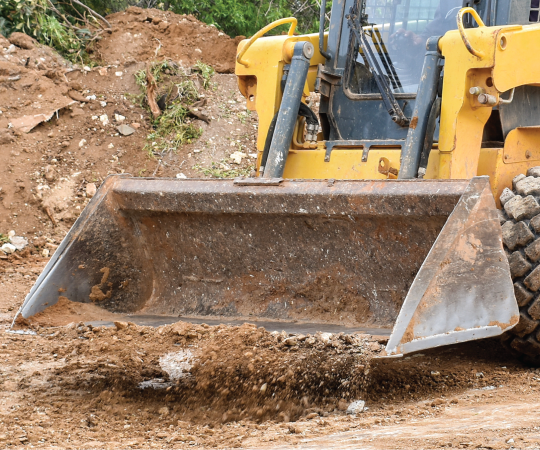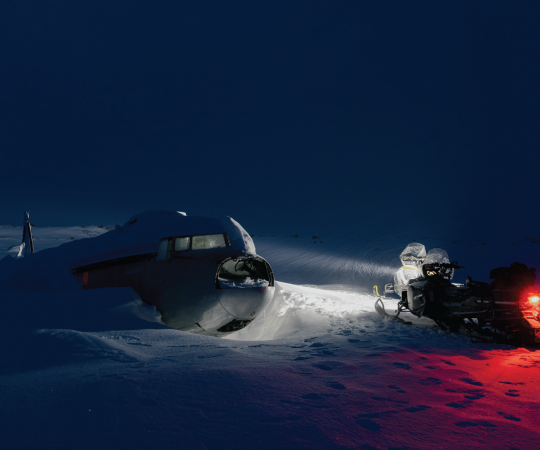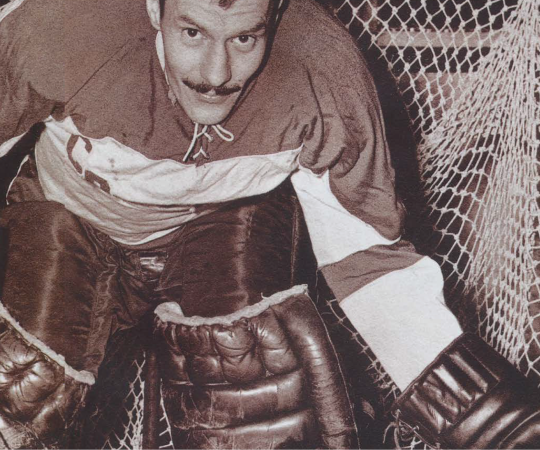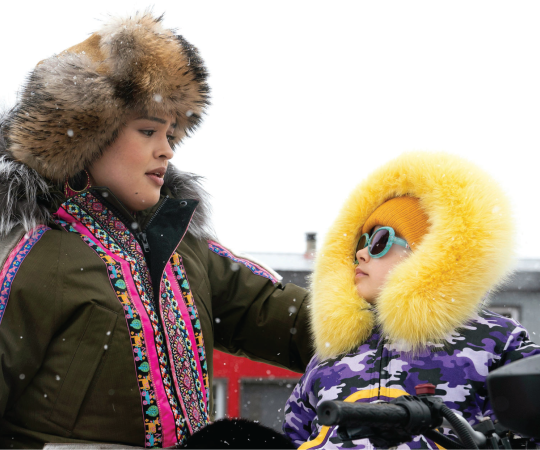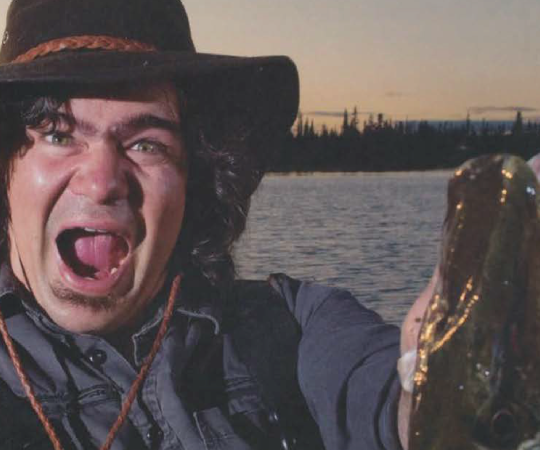Dawna Hope is an early riser, and the morning of June 24, 2024, was no different. The chief of the First Nation of Na-Cho Nyäk Dun woke up to her husband’s alarm at 6:30 a.m. in Mayo. As she and Gary drank coffee on the couch, Hope checked her phone, scrolling through the stream of messages that had come in overnight. One was a text from a friend who knew someone working at the Eagle gold mine, 85 kilometres north of the Yukon community. The mine’s heap-leach pad, filled with ore and a cyanide-based solution to extract gold, had failed, sliding down into the valley. Hope knew immediately it was bad.
She acted quickly. Mark Ayranto, chief operating officer at Victoria Gold, the mine’s owner, confirmed the news and said he was on his way to the site. Then Hope drove to her office and watched a video of the slide. It wasn’t a good-quality recording, but gave her a sense of the scale of the disaster. She sent three Na-Cho Nyäk Dun employees to the mine to find out what was going on.
The next day, the First Nation began collecting water samples from Haggart Creek, downstream from the collapse. As the mine failure made national news, the Na-Cho Nyäk Dun’s main concern was environmental damage—how far would the contaminants spread? The mine is on Na-Cho Nyäk Dun’s traditional territory, and citizens drink from creeks and hunt, fish and camp in the area.
Speaking to reporters over the following weeks and months, Hope accused the Yukon government of poor oversight of the mine. She also pushed for a sense of urgency she felt—and still feels—has been missing. “We’re fighting a war that’s invisible now,” she said on the Northern Miner podcast, “and our people can’t trust the land.”
Hope is not a conventional politician. She’s not self-aggrandizing, she doesn’t appear insincere or even rehearsed, and she speaks quietly and thoughtfully, without resorting to the political trick of saying so many words while not really saying anything at all. Elected chief in April 2023, she’s an introvert who carries her emotional-support dog—a chihuahua named Fredericko, or Freddie—in her arms or purse to meetings. But Hope studied renewable-resource management and conservation science and spent years working environmental jobs. She knows what she’s talking about.
And this isn’t her first crisis. In the last few years, the community has faced a toxic-drug epidemic, increased violence and a wildfire evacuation. While some people might have regretted running for chief, Hope feels honoured—and determined—to lead her First Nation through all this adversity: “I will always be a warrior for what I know we deserve.”
HOPE CALLS HERSELF a land-claims baby. She was four years old when Yukon First Nations chiefs travelled to Ottawa in 1973 to present the landmark document Together Today for Our Children Tomorrow to Parliament. Growing up in Whitehorse, she’d look in the mirror and know she was First Nations, but she wasn’t legally—not in the eyes of the Canadian government. Since 1876, the Indian Act had revoked the status of First Nations women who married white men, as Hope’s mother had. It also wiped out their children’s status. All she knew was that her mom was from Mayo, four hours north of Whitehorse, and that family friends called her “Daddy’s little Indian princess.”
Hope struggled at school—it just didn’t hold her interest. (As an adult, she was diagnosed with ADHD.) She loved art class, but her Grade 7 teacher, famous Yukon artist Ted Harrison, told her she wasn’t very good. He moved her to band class, where she played clarinet. (Joke’s on Harrison: Hope is now a talented beader and creates art made of fish scales, handling the tiny pieces with tweezers and colouring them with bingo dabbers. “Although they seem very delicate,” she says, “they’re actually very tough and very durable.” )
At 16, Hope dropped out of school and travelled to British Columbia to visit a friend and escape an abusive boyfriend. While down south, she met Gary Hope and became stepmother to his toddler daughter, Carmen. In 1991, the family moved to Marsh Lake, a half hour south of Whitehorse, where Hope settled into life as a stay-at-home mom.
Two years later, the First Nation of Na-Cho Nyäk Dun—“big river people” in Northern Tutchone—signed its final and self-government agreements with the federal and territorial governments. These pacts outline First Nations’ rights and law-making powers and describe how governments must interact with each other. Based on Hope’s ancestry, which includes several generations of Na-Cho Nyäk Dun matriarchs, the First Nation approved her citizenship. “It was a struggle of identity for a long time,” she says. “That’s when I recognized who I was.”
Back in the classroom, with financial support from Na-Cho Nyäk Dun, she completed her outstanding high school courses, then enrolled in the renewable- resources management program at Yukon College. As an adult, she couldn’t learn enough. She needed 60 credits to get her diploma, but graduated with 88. “I just couldn’t choose classes,” she says. “There was so much I was interested in.”
In 2004, after she accepted a job as a Northern Tutchone steward at the Yukon Fish and Wildlife Management Board, she and Gary moved to Mayo. Over the next two decades, Hope went on to hold several positions related to wildlife, water and lands management.
She also earned a degree in northern environmental and conservation sciences from the University of Alberta and enrolled in the Indigenous governance program at Yukon University. Ron Cruikshank, who hired her as a senior policy and planning advisor at the Yukon Land Use Planning Council in 2016, praises her broad perspective. “She obviously knows the First Nations culture and realities quite well, but she also has had some education through the non-First-Nation world,” he says. “I think one of her key characteristics is her ability to understand and operate in both worlds.”
NA-CHO NYÄK DUN'S traditional territory has been mined for over 100 years, from small placer operations in the early 1900s to United Keno Hill, which was once one of Canada’s largest silver producers. In the late 2000s, Victoria Gold wanted to mine a deposit by heap leaching, a method that involves piling ore onto an impermeable liner, then irrigating it with a cyanide solution to dissolve the gold. To alleviate citizens’ concerns about environmental contamination, the company hosted site visits, bringing elders and other residents out to the site and informing them about the planned safeguards.
Victoria Gold president and CEO John McConnell, who bought a house in Mayo with his family, attended meetings and community events and formed friendships. He seemed invested. Victoria Gold and Na-Cho Nyäk Dun signed an agreement mandating that the company would provide money, jobs and scholarships to the First Nation. Eagle would go on to become the Yukon’s largest gold mine, with about 400 employees.
As her First Nation’s manager of lands and resources, Hope attended mining-industry events. She saw how ethical and sustainable mines could be and thought they were held to higher standards elsewhere in North America than they were in the Yukon. She learned that mines could do better—and, in many cases, wanted to.
Although Hope had never considered politics, her elders teased her about being chief one day. When her great uncle called her “Chief” as a term of endearment, she would laugh and respond, “No goddamn way. Never.”
In the spring of 2019, as the First Nation’s election approached, people started asking her, “Are you going to put your name in?” It was a joke at first, but then she got serious. Her father, former Whitehorse city councillor Gerry Thick, warned her that facing off against the incumbent, Simon Mervyn, would be a challenge. He was right. Hope lost—but by only six votes.
That fall, Yukon Premier Sandy Silver poured Eagle’s first gold bar. A triumphant McConnell thanked financiers, employees and his wife. Na-Cho Nyäk Dun wasn’t invited to the event. And once the mine was up and running, McConnell wasn’t around. “Our citizens, of course, started recognizing that and asking, ‘Where’s John?’” Hope says. “They wanted to see him.”

IN SEPTEMBER 2021, Hope’s daughter, Carmen, died from an opioid overdose in Whitehorse. She was 34 and had been living in Mayo with her young daughter. The coroner found fentanyl in Carmen’s system. Substance abuse had spiked in Mayo since the mine opened, something Mervyn attributed to the increased flow of workers through the community. Early in 2021, the region’s MLA resigned from the Liberal caucus, citing lack of action on addictions. Drugs and alcohol, he said, were “wreaking absolute havoc on our communities.” In 2023, after two men were shot and killed in the community, the First Nation declared a state of emergency.
When the next election approached that spring, Hope had no intention of running again. She was in a new position, as director of lands, heritage and resources, and had applied for federal funding to produce a water budget and strategy—a project she was looking forward to taking on. But her elders asked her to put her name forward for chief. “I don’t know if I’m ready,” she told them. “I don’t know if I’m strong enough to go through that again.”
Unable to say no, she campaigned on addressing the opioid crisis and protecting the land in the face of climate change and increased interest from the mining industry. This time, Hope won by 155 votes, more than double that of the two other candidates. She wished her father, who died in 2022, was there to see her victory.
Things got worse before they got better. That summer, a wildfire forced Mayo residents to evacuate. She’s also had to deal with a post-pandemic staff shortage at Na-Cho Nyäk Dun’s offices, leading to burnt-out employees. “I think being chief is about the hardest job you could possibly imagine,” Cruikshank says. “People expect them to deal with everything from the nursing station not being open on time right through to negotiating a land-claim agreement.”
Toxic drugs continue to kill Mayo residents. Hope says 11 people have died in recent years in the community of 450. The First Nation has brought in mental-health experts and organized events to help people feel less alone. “It’s heartbreaking, especially as a leader, because I know that I was put in this position and a lot of people voted for me because they had high hopes that I could help their addictions,” she says. “And I still hope that I can do that.”
YUKON MINES have a dismal track record. Faro, once the world’s biggest open-pit lead-zinc mine, was abandoned in 1998 and cleaning it up is projected to cost $2 billion. In 2019, Yukon Zinc walked away from Wolverine in the territory’s southeast corner and, four years later, Minto Metals abandoned Minto, near Pelly Crossing. As Premier Ranj Pillai said last July, “Nearly every major mine closure has left us holding the bag.”
The Yukon’s antiquated mining legislation, which dates back to the Klondike Gold Rush, isn’t helping. (In 2021, Mervyn called the laws “an obstacle to reconciliation.”) The government says new legislation is on the way.
After the failure at Eagle, the Yukon ordered Victoria Gold to stabilize the area and install a system to intercept groundwater. But by mid-August, the government and Na-Cho Nyäk Dun had lost confidence in the company’s ability to handle the situation. The territory successfully applied for a receivership order in court, which put accounting firm PricewaterhouseCoopers in charge of remediation. Victoria Gold’s board resigned and the receiver fired McConnell.
But the fallout continues. In February, the Yukon government said 19 million litres of cyanide-laced water had leaked out of a newly constructed containment pond. The chemical has been detected in Haggart Creek, which flows into the McQuesten River, or Et’o Nyäk Tagé, part of a large watershed. “I hope one day that we’re able to contain it,” Hope says, “but even just trying to find the extent of the damage is going to be complex.”
Early on, she demanded that all mining activity on Na-Cho Nyäk Dun’s traditional territory stop until the slide’s cause was determined—something the premier refused to do. He said it would have “significant legal and economic consequences” and would require the government to go against territorial laws. Hope now wonders, “How can we move forward in a good way when we don’t know what happened?”
She’s quick to clarify that she’s not against resource development. “We understand that we need mining,” she said on the Northern Miner podcast last summer. “We all drive cars; we use computers on a daily basis. We just want it done in the best ways possible.” When she called for a public inquiry into the failure, the Yukon government formed an independent review board, which has a narrower scope.
That isn’t enough for Hope. In December, she sent a 17-page letter to Canada’s auditor general, seeking a review of the territory’s oversight of the Eagle mine and its mineral governance more broadly. She alleged the government has a “lax approach to permitting, compliance, monitoring, and enforcement of mineral activity,” citing Victoria Gold’s violations of its water licence, a 17,000-litre spill of cyanide solution in 2021 and other design flaws and operational issues. Six months before the heap-leach failure, a smaller landslide occurred at the facility. Cruikshank, with his decades of land-use planning experience, agrees that a technical analysis isn’t enough. “It’s the regulatory system that allows that setup to happen—for it to fail—that needs to be looked at.” And Hope, who believes the Yukon has neglected its commitments in her First Nation’s final agreement, calls the government’s limited study a “whitewash that will ultimately sweep fundamental problems under the proverbial rug.”
DURING A JANUARY warm spell, Hope drove from Mayo to Whitehorse for a Yukon First Nation Education Directorate (YFNED) meeting. She also attended a workshop on helping others with their trauma when dealing with your own. A young Na-Cho Nyäk Dun woman had recently died in Mayo, devastating the community and, for Hope, bringing up memories of her daughter. Melanie Bennett, YFNED’s executive director and a Trondëk Hwëch’in citizen, has known Hope for years. She describes her as both gentle and tenacious. “When you’re in leadership, you’re not going to please everybody,” Bennett says. “You just have to do the work—in my language, we say trë’hude—in a good way. And I think she does her best to try and do that.”
Hope says that, according to the Myers-Briggs personality test, she is an INTJ—introverted, intuitive, thinking and judging. This type of person is strategic and logical, loves learning and tends to be private and reserved. That she brings up her Myers-Briggs results might say something about Hope—as do her tattoos. She started getting them when she turned 40 and now has so many she’s lost count. The most recent one is a large, colourful phoenix on the left side of her abdomen. It symbolizes her rising—how she’s attained a better understanding of who she is and how she fits into her community.
Throughout her life, she’s followed a path, unsure of where it led. But now, as chief, her purpose is clear. She believes her ancestors sent her down this path and now she can see why. Having grown up alongside the development of her First Nation’s final agreement, she feels responsible for upholding it. “It gave me my culture back, my identity back,” she says. “Elders have been watching me all my life and even asking me, ‘What took you so long to get here?’ I especially feel it now—I was meant to be here.”

